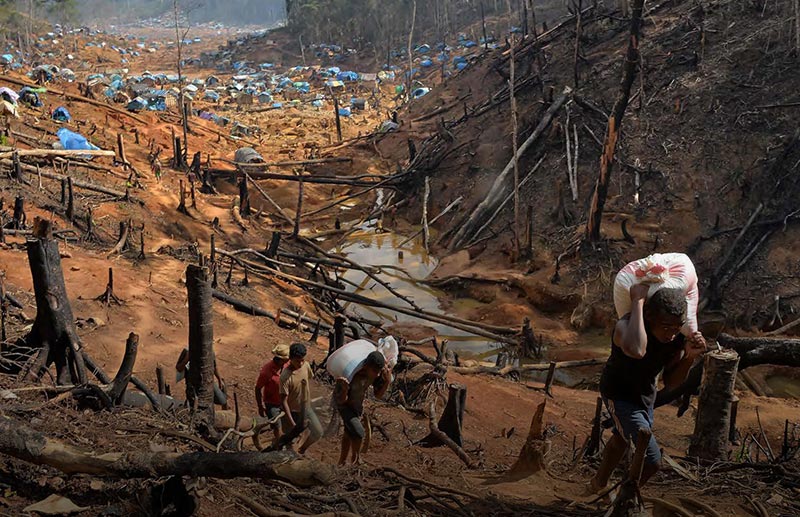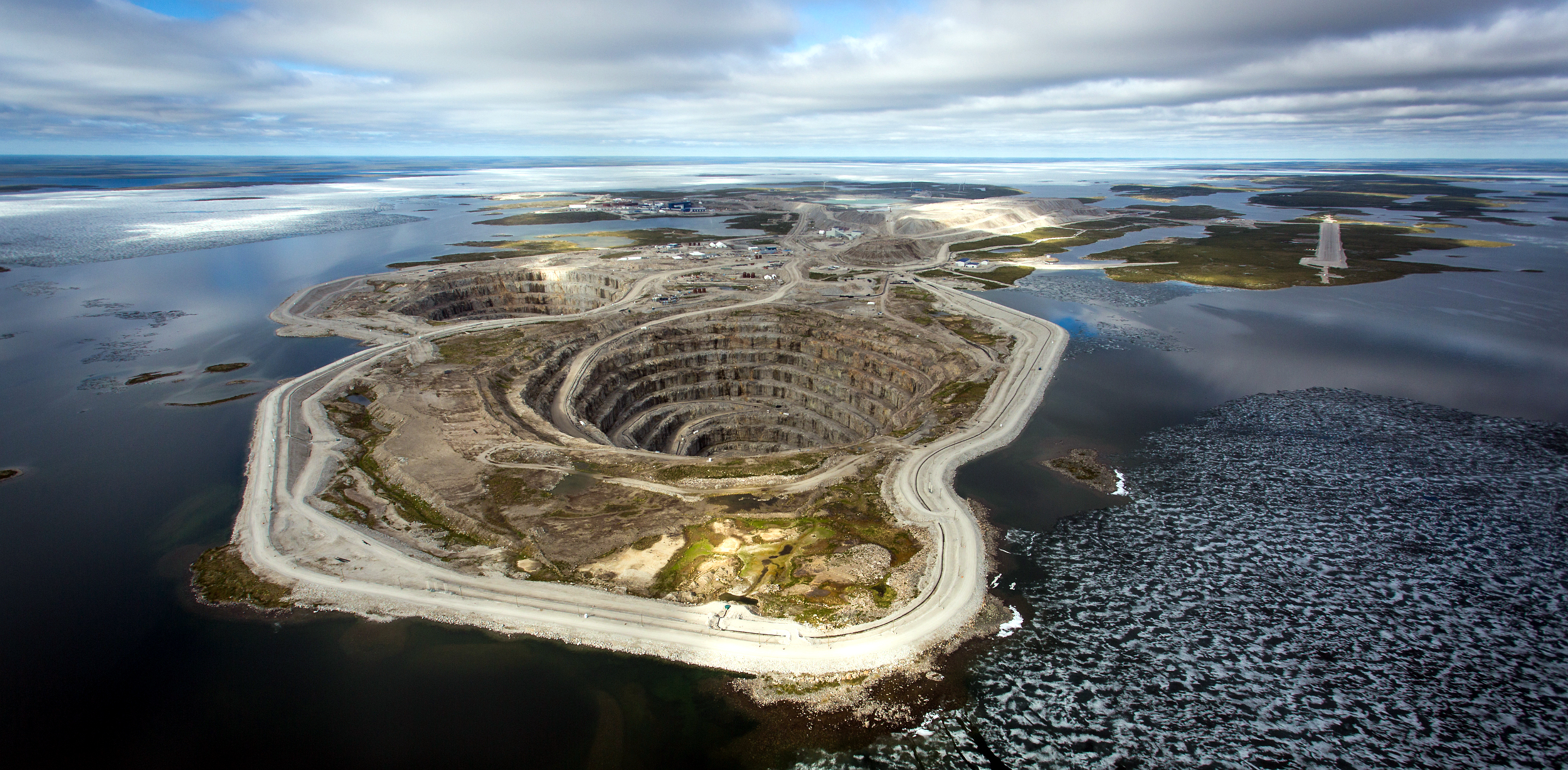The Art And Impact Of Gemstone Mining
Gemstones, those dazzling pieces of Earth’s artistry, have captivated human imagination for centuries. Their allure lies not just in their beauty, but also in the intriguing stories of their origins. Behind every polished gemstone, there's a tale of geological marvels, human endeavor, and environmental impact. Let’s delve into the world of gemstone mining, exploring its techniques, challenges, and significance.
The Intricate World Of Gemstone Mining
Gemstone mining, an intricate blend of artistry and science, unveils the Earth’s hidden treasures with meticulous precision. Unlike other minerals, gemstones are esteemed not merely for their monetary value but also for their exquisite aesthetic and rare qualities, rendering the mining process a fascinating amalgamation of skill and expertise.
A Unique Valuation
At the heart of gemstone mining lies a distinctive valuation process. While other minerals might be prized solely for their utility, gemstones are revered for their beauty and rarity. Each gem, whether it's a resplendent sapphire or a gleaming diamond, carries a story etched in its facets. The delicate balance of colors, the subtlety of hues, and the brilliance of the cut are factors meticulously considered, making the process akin to crafting a masterpiece.
The Art And Science Of Mining
Gemstone mining necessitates a profound understanding of geological formations. Miners embark on extensive geological surveys and studies to unearth potential sites. These operations are often situated in regions rich in mineral deposits, beneath layers of Earth’s ancient history. The science of geology guides miners, enabling them to decipher the intricate tapestry of the Earth’s crust and identify pockets of precious gems hidden within.
Precision In Extraction
The extraction process itself is a feat of precision. Miners employ a myriad of techniques, from open-pit mining for shallow deposits to intricate underground mining for gems nestled deep within the Earth. Each technique demands expertise honed through years of experience. Miners delicately extract gem-bearing rocks, preserving the integrity of the stones. This delicate process ensures that the gems emerge from the Earth unscathed, ready to adorn jewelry and tell their unique stories.
Balancing Tradition And Technology
In the modern age, gemstone mining finds itself at the crossroads of tradition and technology. While traditional techniques are upheld for their precision and artistry, cutting-edge technologies such as remote sensing and advanced mapping tools enhance the efficiency of geological surveys. Miners leverage these tools to delve deeper into the Earth, exploring terrains that were once inaccessible, thereby expanding the horizons of gemstone discoveries.
Preserving Earth’s Wonders
With the privilege of unearthing Earth’s treasures comes the responsibility of preserving its splendor. Ethical mining practices are becoming increasingly integral to the industry. Miners, geologists, and environmentalists collaborate to ensure that mining operations are sustainable and environmentally responsible. By embracing eco-friendly methods and promoting reforestation initiatives, the industry aims to give back to the Earth, preserving its natural beauty for generations to come.
Techniques Employed In Gemstone Mining
Gemstone mining is a craft honed through centuries, employing various techniques that balance precision, expertise, and environmental consciousness. Here are some of the methods used in this intricate art:
- Open-Pit Mining: Open-pit mining, a widely utilized technique, involves excavating a vast pit to access gem-bearing rocks. This method is particularly suited for shallow deposits, making it a cost-effective choice. Miners remove layers of earth to expose the gems, a process demanding both heavy machinery and skilled labor.
- Underground Mining:When gemstones reside in deeper deposits, miners turn to underground mining. Delving beneath the Earth’s surface, they meticulously tunnel to reach gem-bearing veins. This method prioritizes minimal surface disruption, preserving the landscape above. Advanced technical skills, stringent safety measures, and a deep understanding of geology are imperative for successful underground mining operations.
- Alluvial Mining:Alluvial mining involves a patient exploration of riverbeds and sedimentary deposits. Gemstones, washed away from their original sources, mingle with sand and gravel. Miners sift through these sediments with a keen eye, separating the precious gems from the surrounding materials. This method demands both patience and expertise, as the process requires a careful balance to avoid damaging the delicate stones.
- Hydraulic Mining:Hydraulic mining employs high-pressure water jets to dislodge gem-bearing gravel and earth. The resulting slurry is then channeled into sluice boxes, where heavier gemstones settle while lighter materials are washed away. This technique, while efficient, raises environmental concerns due to the potential for water pollution and habitat disruption.
- Pit Mining:Pit mininginvolves the creation of smaller, controlled pits to access gemstone deposits. Miners excavate these pits methodically, ensuring systematic extraction. This technique allows for a more localized approach, minimizing the impact on the surrounding environment. However, it still requires careful planning to prevent ecological damage.
- Dredging:Dredging involves the use of large machines to extract gem-bearing sediments from underwater environments such as rivers and seabeds. The sediments are brought to the surface, where gemstones are separated from other materials. Dredging poses significant environmental challenges, including habitat disruption and sediment pollution.
Challenges In Gemstone Mining - Navigating Ethical, Environmental, And Scientific Frontiers
Gemstone mining, while a source of undeniable beauty and economic prosperity, is not without its challenges. From the lush forests to the deep geological formations, the industry leaves a lasting impact that necessitates careful consideration and responsible action.
Environmental Impact
Gemstone mining, even on a relatively small scale, can lead to significant environmental degradation. Deforestation, necessary for mining operations, disrupts natural habitats and contributes to biodiversity loss.
Soil erosion, often a consequence of mining activities, further exacerbates environmental damage. Addressing these issues requires stringent regulations and a commitment to sustainable practices. Replanting trees, erosion control measures, and habitat restoration initiatives are vital steps toward minimizing the harm inflicted on delicate ecosystems.
Ethical Concerns
The gemstone industry has been marred by ethical concerns, including issues related to fair wages, child labor, and exploitation of vulnerable communities. Ethical mining initiatives have become imperative, ensuring that the human cost of gemstone extraction is minimized.
Fair labor practices, prohibition of child labor, and the creation of safe working conditions are paramount. By supporting ethical practices, consumers can play a pivotal role in fostering a more humane gemstone industry.
Preserving Geological Sites
Gemstone mining often encroaches upon geologically sensitive areas that hold invaluable scientific insights. Preserving these sites is essential for ongoing geological research and education.
Striking a delicate balance between mining operations and the preservation of these geological wonders is a challenge. Establishing protected areas, conducting thorough geological surveys before mining, and integrating mining operations with scientific research can help preserve these sites for the benefit of future generations.
Confronting The Environmental Toll - Negative Impacts Of Gemstone Mining
Gemstone mining, while a source of extraordinary beauty and economic value, exacts a significant toll on the environment. From the depths of the Earth to the communities surrounding mining sites, the industry leaves a trail of environmental degradation and human exploitation.
Human Exploitation
One of the dark facets of gemstone mining is the exploitation of human labor. In many mining regions, especially in developing countries, miners often work in hazardous conditions for meager wages. Children, in particular, are vulnerable to exploitation, being forced into labor instead of classrooms, robbing them of their right to education and a proper childhood.
Water Contamination
Mining processes, especially when involving toxic chemicals, can lead to severe water contamination. Chemicals used for extraction and processing of gemstones can leach into nearby water bodies, contaminating drinking water sources for both humans and wildlife. This pollution disrupts aquatic ecosystems and endangers the health of those reliant on these water sources.
Carbon Emissions
Gemstone mining operations, particularly large-scale ones, often involve heavy machinery, transportation, and energy-intensive processes. These activities contribute significantly to carbon emissions, worsening the effects of climate change. The carbon footprint of mining operations underscores the urgent need for sustainable practices to mitigate the industry's impact on our planet’s fragile climate.
Animal Habitat Destruction
Mining operations, especially those involving deforestation and land excavation, lead to the destruction of natural habitats. This habitat loss disrupts ecosystems, displacing wildlife and often leading to endangerment or extinction of various species. The delicate balance of nature is disturbed, affecting not only the animals but also the surrounding flora and fauna.
Danger To Worker Health
Miners face numerous health hazards, from exposure to harmful chemicals to the risk of physical injuries due to the nature of the work. Silica dust, a common byproduct of gemstone mining, poses severe health risks such as lung diseases and silicosis, impacting the well-being of miners and their families.
Addressing these challenges requires a multifaceted approach. Stricter regulations, ethical mining practices, and investment in technology that reduces the environmental impact can pave the way toward a more sustainable future for the gemstone mining industry. Moreover, fostering awareness among consumers about the origin of their gemstones and supporting ethical and eco-friendly initiatives can drive positive change, ensuring that the allure of gemstones doesn’t come at the expense of our environment and the well-being of those involved in their extraction.
What Are Ethical Gemstones?
Ethical gemstones, often referred to as ethically sourced or fair trade gemstones, are precious stones that have been mined, cut, and sold with a strong focus on ethical and social responsibility. Unlike conventional gemstones, which might be associated with exploitative practices, ethical gemstones prioritize the well-being of both the environment and the people involved in the mining and trading processes.
Fair Treatment Of Workers
Ethical gemstone practices ensure that miners and workers are treated fairly and provided with safe working conditions. This includes paying fair wages, providing healthcare, and prohibiting the use of child labor. Ethical initiatives empower local communities, offering them opportunities for education and economic growth.
Environmental Responsibility
Ethical gemstone mining is conducted with a keen awareness of environmental impact. Miners adhere to responsible mining practices that minimize damage to ecosystems. This can include reforestation efforts, water conservation, and efforts to reduce carbon emissions associated with mining operations.
Transparency And Traceability
Ethical gemstone suppliers prioritize transparency in their supply chain. They trace the journey of each gemstone from its source to the market, ensuring that it has been ethically mined and processed. Certification processesand documentation provide consumers with the assurance that the gemstone they purchase is free from exploitation.
Community Development
Ethical gemstone initiatives often invest in community development projects. This can include building schools, healthcare facilities, and infrastructure in mining communities. By contributing to the development of these communities, ethical practices create a positive impact on the lives of the people residing in gemstone-rich areas.
Conflict-Free Gems
Ethical gemstones are guaranteed to be conflict-free. Unlike conflict diamonds, which fund armed conflict against governments, ethical gemstones are sourced in a way that ensures they do not contribute to social or political instability. Conflict-free gemstones provide consumers with the assurance that their purchase does not support harmful activities.
Preservation Of Cultural Heritage
In regions rich in gemstone deposits, ethical practices also involve respecting and preserving the cultural heritage of indigenous communities. This includes understanding and respecting traditional mining practices and incorporating them into modern, sustainable approaches. Preserving cultural heritage ensures the longevity of traditional knowledge and practices.
Gemstones Mining - FAQs
What Is Gemstone Mining?
Gemstone mining is the process of extracting valuable and precious gemstones from the Earth's crust. These gemstones, including diamonds, rubies, sapphires, and emeralds, are highly sought after for their beauty, rarity, and monetary value. Gemstone mining involves various techniques and methods to locate, extract, and process these valuable stones.
How Do People Mine Gemstones?
People mine gemstones using several techniques, each suited to different geological conditions and depths of the gemstone deposits:
- Open-Pit Mining:Miners excavate a large pit to access gem-bearing rocks. This method is suitable for shallow deposits and involves removing layers of earth to expose the gems.
- Underground Mining:Miners tunnel below the surface to reach gem-bearing veins. This method is used for deeper deposits and requires advanced technical skills to ensure the safety of the workers.
- Alluvial Mining:Minerssift through riverbeds and sedimentary deposits to find gemstones washed away from their original sources. This method demands patience and a keen eye, as gemstones are often mixed with sand and gravel.
- Hydraulic Mining:High-pressure water jets dislodge gem-bearing gravel and earth, which is then processed to extract gemstones. This technique is efficient but raises environmental concerns due to potential water pollution.
Are The Gems In Gem Mining Real?
Yes, the gems obtained through gemstone mining are real and genuine. Gemstone mining yields natural gemstones formed over millions of years through geological processes. These gemstones are authentic and highly valued for their natural beauty and uniqueness.
For a wide selection of authentic gemstone jewelry, you can visit Bernardine's Jewelry, a reputable online store offering exquisite jewelry pieces crafted with genuine gemstones. Their collection showcases the beauty and authenticity of natural gemstones, making them a trusted source for quality jewelry.
Conclusion
Gemstone mining, with its intricate techniques and challenges, continues to shape the world of precious gemstones. As technology advances and ethical practices become more prevalent, the industry stands at a crossroads. By embracing sustainable mining practices and promoting ethical initiatives, we can ensure that the allure of gemstones is not tarnished by environmental degradation or social injustice. Gemstone mining, when done responsibly, preserves the Earth’s wonders for future generations, allowing us to marvel at the beauty of these natural treasures while respecting the planet that yields them.




